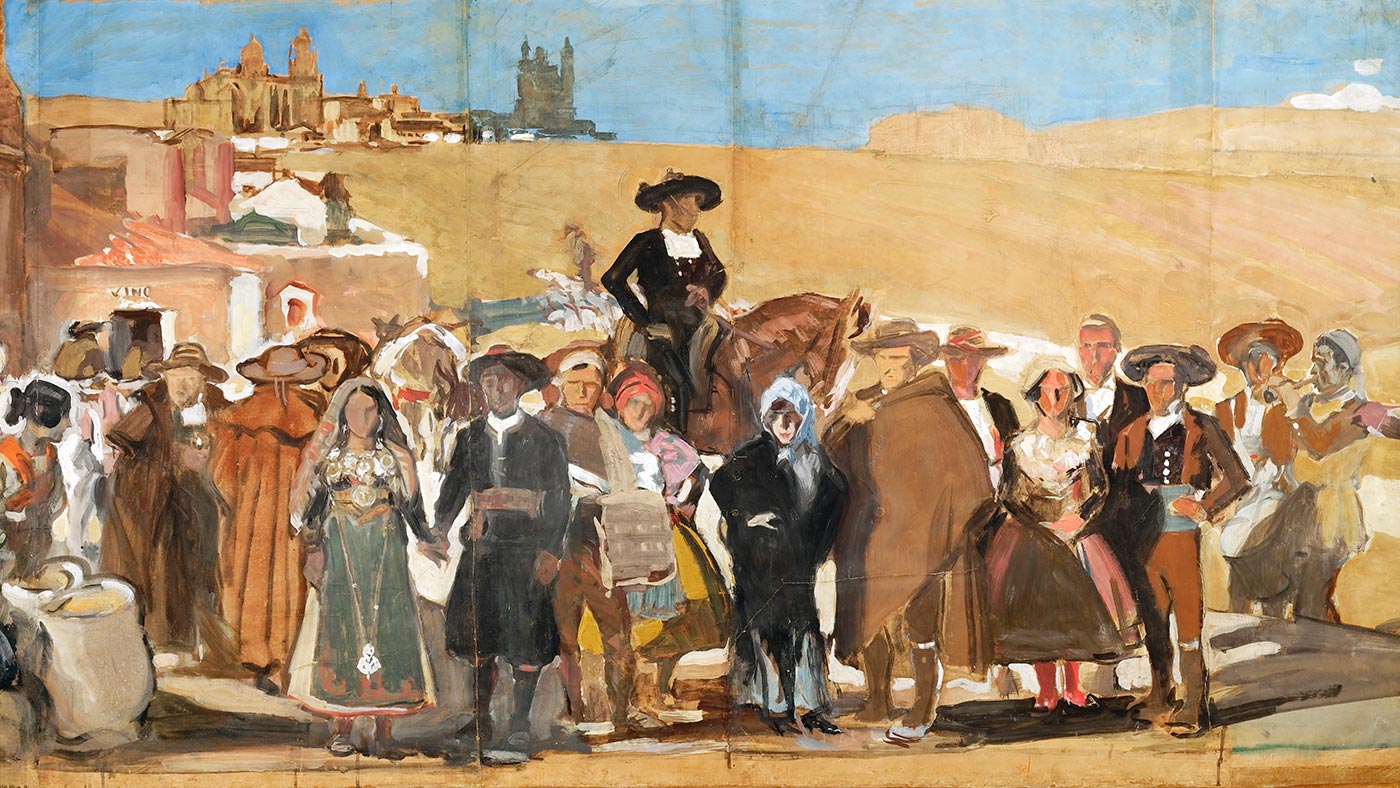Spain and the Hispanic World: an expansive and eccentric exhibition
Royal Academy show captures ‘the folkloric Spain of peasants and bullfighters’

In 1882, Archer M. Huntington, the son of an American railroad tycoon, made his first visit to Europe and found a book about Spanish gypsies in a Liverpool bookshop, said Adrian Searle in The Guardian. “Spain must be much more interesting than Liverpool,” he wrote in his diary.
It was the beginning of a lifelong passion, which saw Huntingdon amass the most comprehensive collection of Spanish and Hispanic art outside of Spain. In 1908, he opened the Hispanic Society Museum & Library in New York to display his treasures.
The museum is currently closed for refurbishment, and the Royal Academy has taken the opportunity to borrow more than 150 of its best pieces. “Sunny Spain and black, severe Catholic Spain; the folkloric Spain of peasants and bullfighters, bodegas and Carmen; the Spain of empire and conquest, the Moorish Spain of Al-Andalus” – they’re all here.
The Week
Escape your echo chamber. Get the facts behind the news, plus analysis from multiple perspectives.

Sign up for The Week's Free Newsletters
From our morning news briefing to a weekly Good News Newsletter, get the best of The Week delivered directly to your inbox.
From our morning news briefing to a weekly Good News Newsletter, get the best of The Week delivered directly to your inbox.
There are “great things” in this exhibition: a “small and intimate” portrait of a young girl by Velázquez, possibly of his granddaughter; Goya’s full-length 1797 portrait of the Duchess of Alba wearing a “showy” lower-class costume; Giovanni Vespucci’s 1526 World Map “with its elisions and vast blanks and unknown parts”. But it’s a curious show overall: “grim and gorgeous, extensive and rushed, overwhelming in its scope”, yet “oddly truncated”.
“Sometimes it’s too much,” agreed Chloë Ashby in The Times. The exhibition covers the art and culture of Spain and Latin America from the prehistoric era to the early 20th century, and the many cultures that shaped it. You can see the metalwork and pottery of the prehistoric Iberians, the craft of Muslim artisans. “Three rooms are set aside for the maps and decorative arts of colonial Latin America.”
The Spanish Golden Age is represented by the work of some of its greatest painters, such as El Greco and Francisco de Zurbaran. At the end of the show, there are a series of colossal canvases by the impressionist Joaquín Sorolla. Commissioned in the early 20th century for the Hispanic Society, they depict different regions of Spain, “bursting with colour, bathed in light”.
There are “Sorollas aplenty”, said Hettie Judah in The i Paper – “beach scenes full of clingy garments and wet skin, a garden abundant with garish blooms”. They are typical of this rather eccentric collection, that speaks perhaps as much of “the obsessions of its owner” as of the subjects it celebrates.
A free daily email with the biggest news stories of the day – and the best features from TheWeek.com
‘Trapped in another era’
The show does invoke the sense of being “trapped in another era”, before museums felt obliged to present carefully “designed experiences”, said Mark Hudson in The Independent – “when it was enough simply to put interesting stuff in a room and leave it up to the visitor to take it or leave it”. But that’s no bad thing, given the sheer quantity of fascinating artefacts here.
Where else would you see a “fabulous array of renaissance doorknockers in the form of mythical beasts and birds”? Or a lacquered 17th century Mexican writing desk covered in Aztec decorative figures? Or a “troubling” casta (caste) painting entitled Mestizo and Indian Produce a Coyote (1715) that depicts a mixed race man and his native American wife and child with disgust, exhibiting the Spanish colonists’ obsession with racial purity. Overall, though, “it’s the exuberant impurity of many of its exhibits that provides this exhibition’s best moments”.
Royal Academy, London (020-7300 8090, royalacademy.org.uk) Until 10 May
-
 The best food books of 2025
The best food books of 2025The Week Recommends From mouthwatering recipes to insightful essays, these colourful books will both inspire and entertain
-
 Art that made the news in 2025
Art that made the news in 2025The Explainer From a short-lived Banksy mural to an Egyptian statue dating back three millennia
-
 Nine best TV shows of the year
Nine best TV shows of the yearThe Week Recommends From Adolescence to Amandaland
-
 Winter holidays in the snow and sun
Winter holidays in the snow and sunThe Week Recommends Escape the dark, cold days with the perfect getaway
-
 The best homes of the year
The best homes of the yearFeature Featuring a former helicopter engine repair workshop in Washington, D.C. and high-rise living in San Francisco
-
 Critics’ choice: The year’s top 10 movies
Critics’ choice: The year’s top 10 moviesFeature ‘One Battle After Another’ and ‘It Was Just an Accident’ stand out
-
 A luxury walking tour in Western Australia
A luxury walking tour in Western AustraliaThe Week Recommends Walk through an ‘ancient forest’ and listen to the ‘gentle hushing’ of the upper canopy
-
 Joanna Trollope: novelist who had a No. 1 bestseller with The Rector’s Wife
Joanna Trollope: novelist who had a No. 1 bestseller with The Rector’s WifeIn the Spotlight Trollope found fame with intelligent novels about the dramas and dilemmas of modern women


